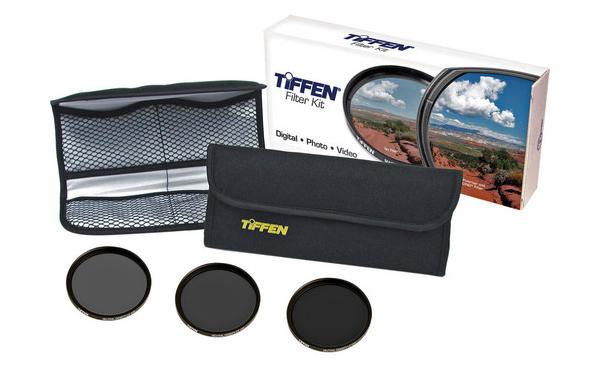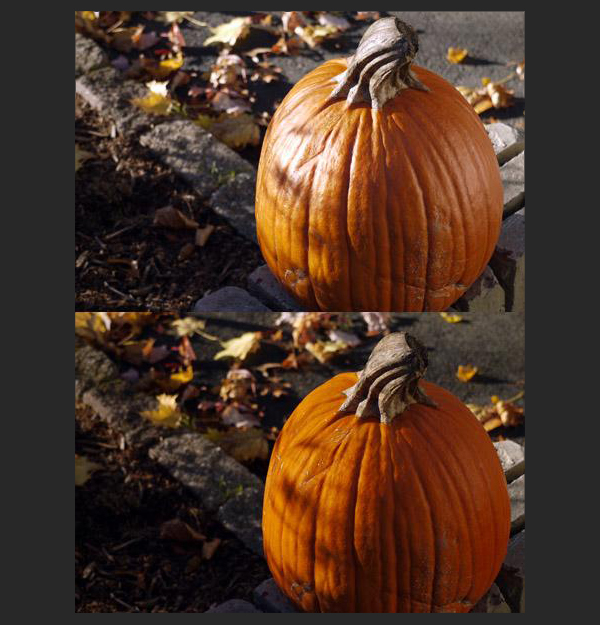10 Things You Need to Know About Physical Photo Filters

Here’s nearly everything that’s important to know about photo filters (the tangible kind) told in easy to understand language. Plus, at the end, a bonus tip tells you how to remove a screw-in filter that’s stuck to a lens.
1. Filters lighten their own color and darken their complement.
Remember the color wheel from art class? Colors across from each other on the wheel are labeled complementary. Red is the complement of green (and of course, vice versa). Same goes for blue and yellow.
A color image created with a solid color filter in front of the lens takes on the color cast of that filter. But when you use a colored filter while making a black and white image, interesting things happen. A red filter lightens red objects (like apples) and darkens green objects (like apple tree leaves). A yellow filter darkens a blue sky and accentuates cloud structure. Remember, we’re talking about monochrome images here.
To learn more about complementary colors, experiment with Adobe’s interactive color wheel.
2. Nearly all filters require an increase in exposure.
Filters either absorb light, reflect it, or allow it to pass through. In the example above, a red filter absorbs green light and allows red light to pass. This is why green objects appear darker while red objects appear lighter. Some light is unavoidably reflected.
When light is reflected or absorbed, less light reaches the film or image sensor. It follows logically, then, that nearly all filters require an increase in exposure—sometimes a significant amount, and sometimes an amount so negligible that it can be disregarded. The amount of increase necessary is called the Filter Factor.
3. UV and Skylight Filter myths.
Back in the day before the internet became salesperson to the world, cameras were usually purchased from camera store personnel who were—for the most part—polite, helpful and very well informed. One can still find this endangered species at local retail camera stores.
If you bought your camera or lens from a camera shop, odds are you were offered a UV (Ultra Violet) Haze or Skylight (1A) filter “to protect the lens.” The salesperson was doing you a favor by recommending a filter, but in some cases that I have witnessed, a bit of mythology was introduced along the way.
Indeed, these filters do provide an additional layer of protection against unwanted fingerprints and the like. But UV Haze and Skylight filters are not the same.

Both filters slightly reduce the amount of blue light that passes through the lens. Atmospheric haze consists largely of scattered blue light; hence, both filters suppress haze slightly. Skylight filters also provide a tiny amount of pinkish warmth to an image, and therefore are beneficial when photographing people.
Although neither UV nor Skylight filters require an increase in exposure, they do refract the light that passes through. In simpler terms, the light bends slightly on its way through the filter toward the image sensor. This bending (refraction) can have negative influence on the image, including slight unsharpness. This is true of 100% colorless glass filters, too.
Cheaply made filters that are thick and/or have front and rear surfaces that are not parallel cause the most image degradation. See No. 4 below.
4. The importance of being planoparallel.
If the front plane (surface) and rear plane of a filter are parallel, the filter is said to be planoparallel. Light that passes through a planoparallel filter is distorted less than light that passes through a filter that is wedge-shaped or has uneven surfaces.

5. Not all photo filters go in front of the lens.
The most common filters go in front of the lens. Usually filters are threaded and twist into the matching threads on the lens. Alternatively, filters can be slipped into a filter holder that screws onto the lens, as in the case of Cokin Creative Filters. See below.
However, some lenses like fisheye and catadioptric (mirror) lenses cannot accept threaded filters in front. Instead, filters are attached to the rear of the lens, or inserted in a filter slot near the end. Appropriate filters are sometimes supplied with the lens, usually at least an ND (neutral density) and UV. In this case, the existence of the filter is nearly always computed as part of the optical formula. In other words, for best results you must always keep one of the filters that came with the lens installed at all times.
6. Not all filters screw in.
Cokin filters appeared around 1980. The system consists of a slotted plastic filter holder, a metal adapter ring that screws into the threads on the front of a lens, and a massive assortment of rectangular and round filters that fit into the slots on the filter holder.
The system was revolutionary when it appeared because one filter could be used on lenses of many different diameters by simply using the correct metal adapter ring. So if your normal lens had a 49mm filter thread and your zoom was 52mm in front, you didn’t have to buy two filters—just two rings—a much more economical alternative.
Because I worked for the company that was the first USA distributor of the Cokin Creative Filter System (Minolta Camera) I was fortunate enough to have had access to every flavor and variation of Cokin filters. I’ve used them all at one time or another—and still do. I think they’re great, but I freely confess my bias.
7. Filter coating matters.
What does lens coating do? It reduces reflection and enhances light transmission. This is true whether the lens in question is a simple glass filter or a precision element in a modern optical lens.
Recently some companies—Tamron comes to mind—have begun using Fluorine to coat the exposed surface of the front lens element. Fluorine is hydrophobic so it sheds water and fingerprints.

8. Polarizing filters rule.
Polarizing filters darken blue skies and add punch to clouds in color images, and that’s what they’re famous for. They also remove glare from just about any shiny surface and reveal the true colors of an object. Polarizers allow you to see and photograph objects below the surface of still water and reduce the reflection from windows and car fenders. A polarizer can improve many, many of the images you shoot outdoors on sunny days.
During use, Polarizers are rotated to vary the appearance of the object (and therefore the image of the object) from extra-heavy glare to minimal glare. You must be able to see the effect change while rotating, so for the most part they cannot be used on point-and-shoot cameras.
The downside is that Polarizing Filters are light gluttons and usually have a Filter Factor of 2X to 3X. Of course, that means you can also press them into service as an impromptu ND Filter should the need arise (see No. 10 below).
If you want to get into the technical aspects of how Polarizers work, leave a note in the comment section and I’ll be happy to open that can of worms for you.
9. Hot Mirror Filters.
Although it may sound like something a sexy starlet uses when shooting selfies, a Hot Mirror Filter is not nearly that cool. A Hot Mirror Filter blocks IR (infrared) thru the entire spectrum with no appreciable reduction in visible light transmission. Yes, most cameras have an IR cutoff filter (also known as a Low Pass Filter) installed over the imaging sensor, but some do not.

10. Decoding Neutral Density Filters.
The name says it all: an ND (Neutral Density) filter provides light-absorbing density without changing the colors of an image, thereby allowing you to shoot at a large aperture even in very bright light, for example. That part is simple.
The tricky part is how ND filters are labeled. A 0.3 ND Filter requires an exposure increase of one f/stop; therefore, it requires 2X exposure, i.e., 100% increase. For every 0.3 increment in density, one f/stop exposure increase is required. 0.9 equates to three stops. Sometimes ND filters are sold in sets of three different densities (like the set from Tiffen shown at the top of this column). The filters can be stacked, so using a 0.3 on top of a 0.6 equals 0.9 and also equates to three stops.
The B+W (brand) MRC 110M Solid Neutral Density 3.0 Filter, for instance, is quite extreme. It provides 10 stops and therefore has a filter factor of 1,000X.
Bonus: How to remove a filter that has become stuck on the front of a lens. First, put away the pliers and take off your shoes (actually just one shoe). Gently press the flattest part of the bottom of the shoe (usually the heel) against the full surface of the filter and turn. The shoe sole should provide enough friction to loosen even the most recalcitrant filter. Not all shoes work; you may want to wash the shoe bottom before using it as a wrench. A wide rubber band or section of rubber inner tube looped around the full circumference of the lens works, too, if you have sufficient grip-strength in your arms. Of course, you could take the high road and buy a filter removing tool from B&H for about $5. In any case, be careful not to accidentally unscrew the front lens element.
Fun Fact: CR39 (allyl diglycol carbonate), the material that Cokin Creative Filters are made from, was used to line the fuel tanks of B-17 Flying Fortress bombers during WW2. Today it is the primary material used to craft prescription eyeglass lenses. First formulated by Columbia-Southern Chemical Corporation, a subsidiary of Pittsburgh Plate Glass (PPG), CR39 is the shorthand name for “Columbia Resins, batch 39.”
(Editor's Note: You should also check out this video with 3 reasons why camera filters will help you take better photos now.)
—Jon Sienkiewicz














































